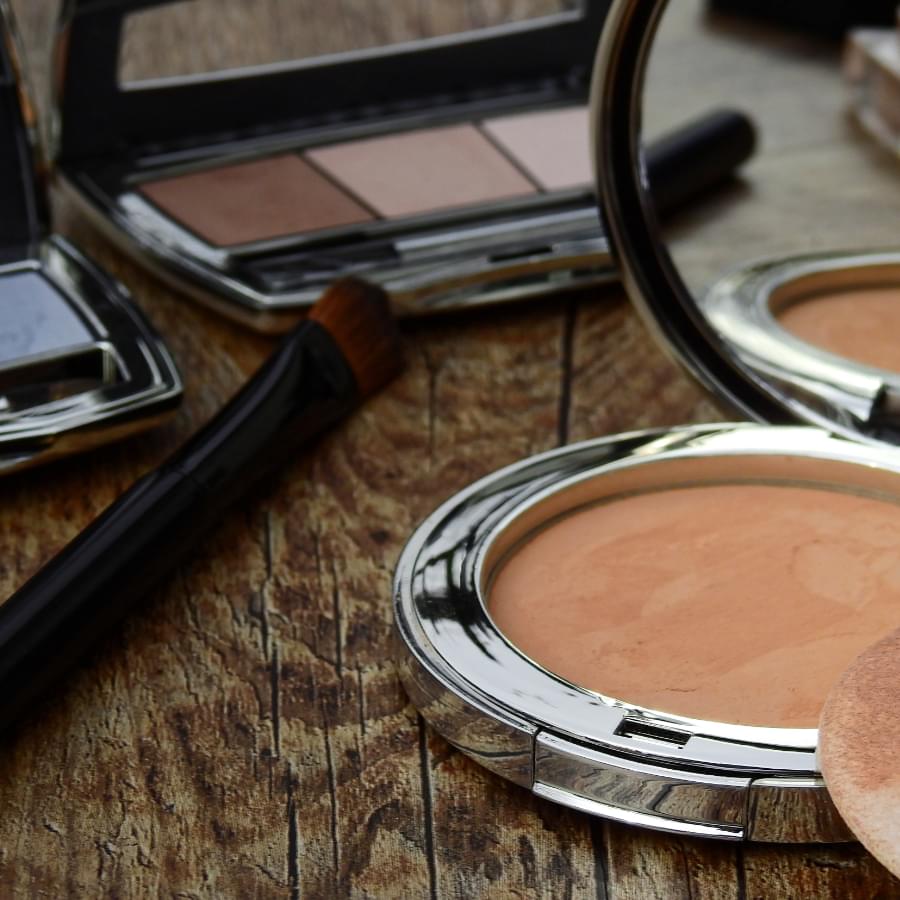The secret to flawless skin starts with a great base.
If you are a beginner and just figured out how to start wearing makeup, you might be ready to take some bigger steps into the makeup world. Here we will show you how to achieve a flawless base by applying concealer and choosing a foundation.
It Starts With Concealer
The first product we’re going to mention is concealer. It’s a completely optional step in your everyday fast makeup routine, but if you have any hyperpigmentation or acne that you’ve been wanting to cover up, it may be a good confidence boost. Some people completely skip this step, so it’s up to each individual. If you do want to start wearing concealer, here are a few tips and tricks.
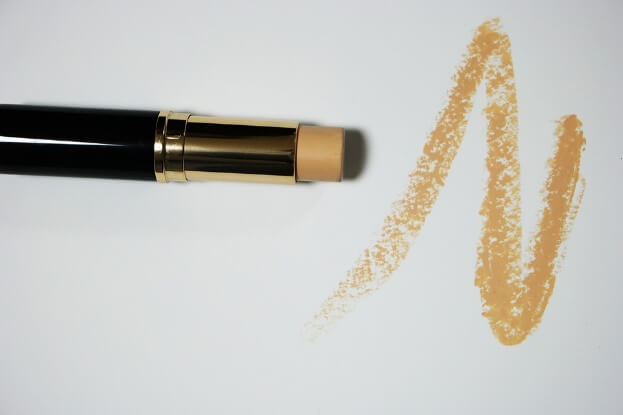
If you want to conceal dark under eye circles, you might want to avoid any shades that are significantly lighter than your skin tone. You may have seen this look on celebrities like the Kardashian sisters. This technique works well if you are wearing a heavy foundation that you can blend or doing a heavy contour, but if too-light concealer is the only thing you’re wearing on your face, you’ll look completely washed out.
Instead, try to find a shade that matches your skin tone and apply using your ring finger or a concealer brush, patting softly to blend. If you’re covering up blemishes, you might find that a concealer pencil works best.
Almost every cosmetics company makes concealers, but the brand that consistently gets rave reviews about their concealer, whether in stick or liquid form, is NARS. If that’s not in your budget, you could try Hard Candy Glamoflauge Concealer, a liquid concealer sold at Walmart. It also comes with a small concealer pencil which is handy for concealing acne. Other affordable options include CoverGirl’s TruBlend FixSticks, IMAN Cosmetics Second To None Cover Cream, and LA Girl Pro Conceal. These options come in a wide range of shades.
Covering Dark Circles and Blemishes With A Concealer
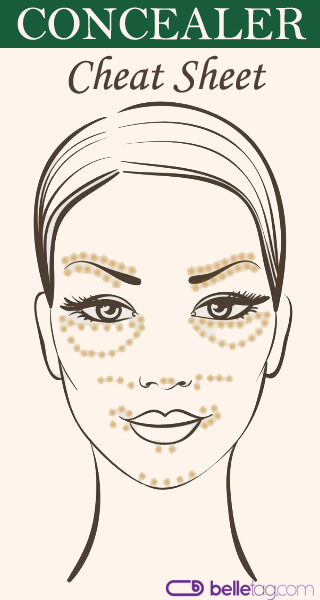
Covering Dark Circles
To apply concealer properly, ensure that your under-eye area is completely free of any mascara or eyeliner that your cleanser may have missed. The basic way to apply concealer is to gently take your middle finger, applicator, or concealer brush and apply the concealer in a dabbing motion from the inside of your nose to the outer corner of your eye, right under your lash line. You can extend your concealer down into a triangle shape if you want.
Be careful not to rub it in— it will blend better if you dab or pat the concealer in. The skin is also very delicate under your eye, so by delicately dabbing, you’ll avoid damaging it.
Tip: You can also use concealer on your eyelids to act as an eye primer, preventing your eyeshadow from smearing or transferring, or to clean up your eyeliner.
Covering Blemishes
For the best application, use a clean concealer brush or a concealer pencil to cover acne. Fingers are not ideal for covering blemishes as they could spread bacteria, so if you must use your fingers, be sure you have just washed them. Pencils work well for covering acne because they are able to cover small, uneven areas.
It’s never a good idea to cake on the concealer, as this may draw attention to your blemishes rather conceal them. A thin layer of concealer that is well-blended is perfect for covering acne, sun spots, or any other area you desire to conceal. Using a concealer that is too light for your skin tone will also draw attention to your blemishes, so it’s important to find a good match.
After you have blended your concealer, make sure it stays in place all day by using a translucent powder or powder foundation. Be sure to set any especially oily areas with a bit of extra powder.
Note: There is no correct order in which to apply concealer and foundation. Some people find that applying concealer first and foundation second suits them better. This method works well if you apply a creamy or liquid concealer followed by a powder foundation.
Others prefer to apply foundation first, then concealer. This is better for those who are using liquid foundation. Experiment to see which way works best for you.
Foundation: Tips and Tricks To Get a Flawless Complexion
Let’s talk a little bit about how to find a foundation that suits you.
How to Find A Perfect Foundation Shade
This is arguably the trickiest part of the whole process. Since everyone’s skin tones are different, it can be a bit difficult to find your exact shade. But don’t worry — there are so many different products available that cater to all types of skin.
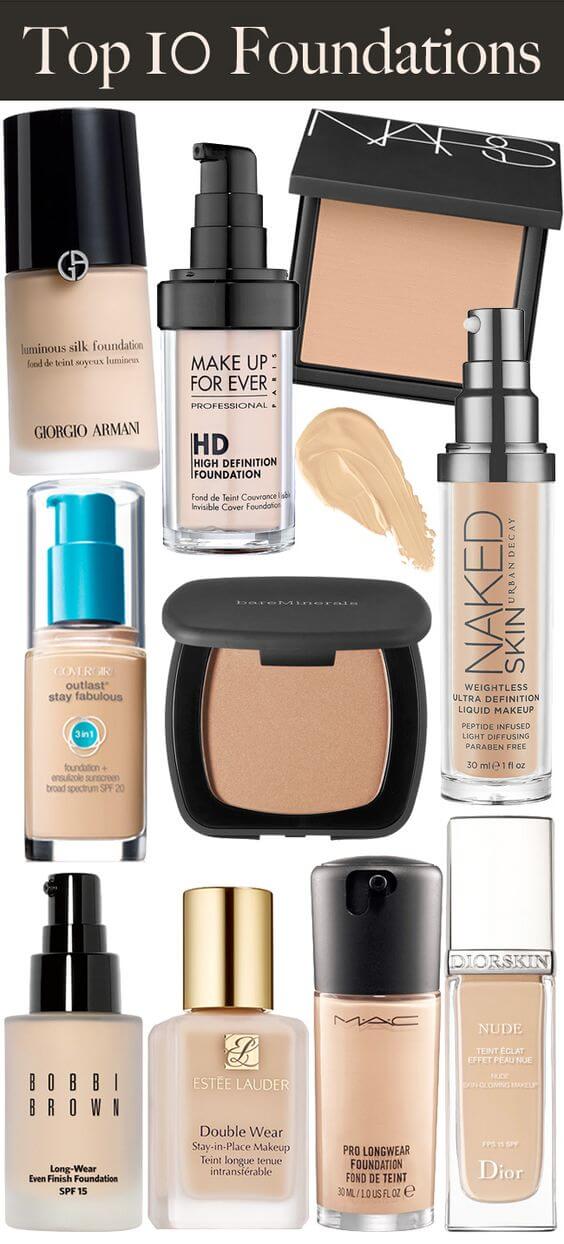
While drugstore foundations are cheaper, you can’t usually try them on before purchasing and you won’t be able to take home any free samples of them. In contrast, you can usually ask for samples of foundations from Sephora or any department store makeup counter.
By trying out samples, you can compare and contrast several different shades and formulas. You’ll also be able to look at yourself in different lighting and see if the foundation oxidizes over time. While you may pay more for higher-end foundations up front, one perfect foundation that you know you love is the same price as trying three different drugstore foundations that are just okay.
To find that perfect shade, don’t bother swatching on your arm or wrist. You’ll want to try the products out on your jaw or actual face since that’s where you’ll want it to be a perfect match. Test a couple out at the same time to compare and contrast.
When buying a foundation, consider your undertones. Most people fall into the category of warm, cool, or neutral undertones. Different foundations may lean warm, cool, or neutral, and you’ll want to buy a foundation that corresponds with your own undertones.
Warm-toned people have yellow or golden undertones to their skin. If your veins look green in natural light and if gold jewelry suits you over silver, you may be warm-toned. People with warm skin tones can have light or dark skin.
Some celebrities with warm tones are Beyonce, Jessica Alba, and Ariana Grande. Look for a foundation shade that has a similar warmth or yellow base to it. Avoid any foundations that appear to have a pink base.
Cool-toned people have red or blue undertones to their skin, such as Anne Hathaway or Lupita Nyong’o. Their veins will appear blue rather than green, and they will suit silver jewelry better than gold. If you are cool-toned, look for a foundation with pink or red undertones and avoid overly yellow foundations. You can have anywhere from dark or light skin with cool undertones, from porcelain to cocoa to anywhere in between.
If you have neutral undertones, you have a combination of both pink and yellow undertones. Some celebrity examples with neutral skin tones are Demi Lovato and Chanel Iman. On people with neutral undertones, their veins look blue-green and they can wear both silver and gold jewelry equally. Neutral skin tones can be light or dark.
If you have made a mistake buying the wrong foundation, don’t fret. You can always try mixing foundations or buying color foundation drops as the Cover FX Custom Enhancer Drops for personalizing the color of the foundation. If you are extremely pale, you can even mix in a bit of white foundation to make it lighter.
How to Choose the Right Finish for your Skin Tone
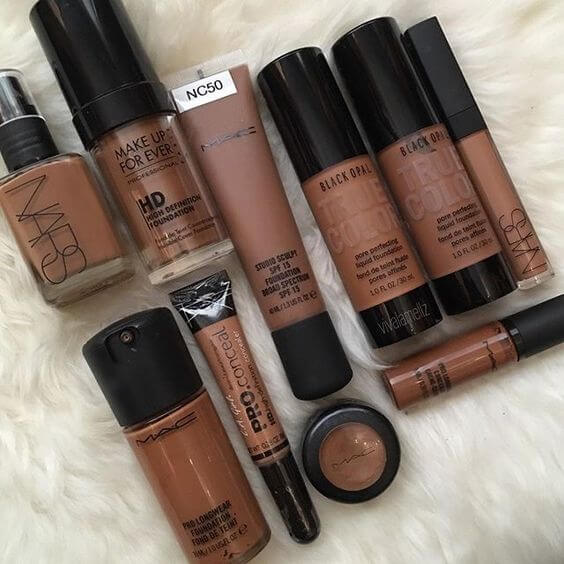
When choosing a foundation, it’s important to pick something that complements your skin type. Your ideal foundation should look as natural as possible while also concealing and perfecting. Most people who wear foundation don’t want it to look like a mask. There are some types of foundations that will look more obvious and less natural on certain types of skin than others.
We’ll run you through all of this in our quick guide to choosing a foundation that suits your skin type. Just scroll down to the section that best describes you.
Foundations for Oily Skin
If you have oily skin, choose a foundation that is more matte-leaning. This means that the foundation won’t have a sheen or dewy look to it – instead, it will appear smooth and silky. Think of it like a photograph in a newspaper (matte) in comparison to a photograph in a magazine (dewy).
Oily skin often has a texture that’s naturally quite shiny, so putting something shimmery or dewy on it could really exaggerate this feature. That’s why it’s recommended to choose a foundation with the opposite texture of your natural skin type. A matte foundation will balance out the shininess of oily skin.
Don’t be afraid of liquid or stick foundations — just because you have oily skin doesn’t mean you have to wear powder foundation. You can use any type of foundation— just look for something that is labeled as “oil-free.” Many makeup companies make special foundations for oily skin which work with your natural texture to lock your foundation in place and keep oiliness at bay.
Regardless of the foundation you end up choosing, make sure it stays put by using powder or primer, as specified in next section.
Foundations for Dry Skin
If your skin is dry, you’ll want to choose a foundation that imitates plump, hydrated skin. Most makeup companies will market this as a foundation with a ‘dewy’ finish. In contrast, a matte foundation might bring more attention to the fact that your skin is dry. It could cling to fine lines or become patchy and obvious— not the most natural look.
If you don’t want a foundation that will make your skin look even drier, skip the mattifying powders and finishes. Instead, search for foundations that give your skin a natural shine. You might also want to consider tinted moisturizer to give you some extra hydration.
Foundations for Combination Skin
If you have combination skin, you can use any type of foundation. Choose whatever you feel most comfortable applying, whether it’s powder or liquid. Whether it’s matte, dewy, or even satin (in between matte and dewy), it’s up to personal preference. Just be sure to add setting powder where you need it.
How to Keep Your Foundation Looking Perfect All Day Long
If you want your makeup to look just as it good as it did when you applied it, there are a number of things you can do to ensure that it stays put all day long. Whether you use primer, setting powder, setting spray, or all three,
Primer – a base for a makeup
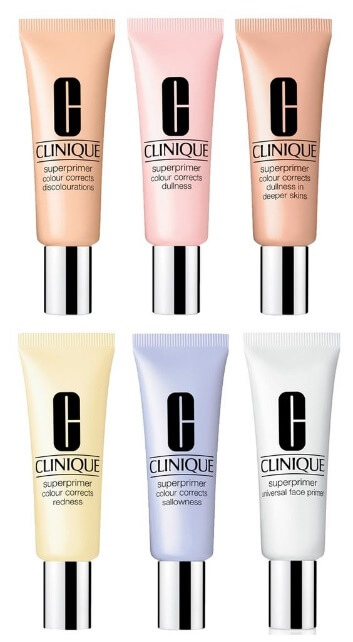
A primer is essentially a base for all of your makeup. Contrary to popular belief, primers aren’t just for people with oily skin. They can make a huge difference on how a foundation applies -they essentially create the perfect surface for foundation to adhere to.
If you have a foundation that already works for you, you might not need any primer. However, if you find that your foundation isn’t staying put all day or that it isn’t creating as natural of a finish as you would like, you might want to try using a primer underneath.
You can find primers at all price points formulated to hide pores, combat oiliness, or create a natural glow. You don’t need any tools to use primer — just apply it with your fingers. You don’t need a whole lot of product, either. Take a dime-sized dollop and apply to the entire face, starting at your t-zone and blending outwards.
Setting Powder – getting makeup stay
You can buy a setting or finishing powder from any major cosmetics company. This powder can be tinted (adds color) or translucent (doesn’t add any color). Whether you choose a tinted or translucent powder is dependent on whether you want fuller coverage or if you simply want to set everything in place. You can use setting powder regardless of your type of foundation — it works on top of both liquid and powder foundations.
If you have oily skin, do not skip this step. You may even want to double up on powder in your oiliest areas. If you don’t have problems with oiliness, you might not need setting powder, or you may just need a bit of powder on your t-zone and/or chin. Nevertheless, if you find that your foundation ‘disappears’ off your face by the end of the day, consider setting your foundation with some powder.
Setting Spray – a way to stay fresh
If you really want to make sure your makeup stays on, consider purchasing some setting spray. Setting spray is perfect for nights out, concerts, weddings, events, sweltering hot summer days, or anytime you want your makeup to last, rain or shine. There are no techniques or tools needed to apply setting spray — all you need are a few spritzes and you’re good to go.
